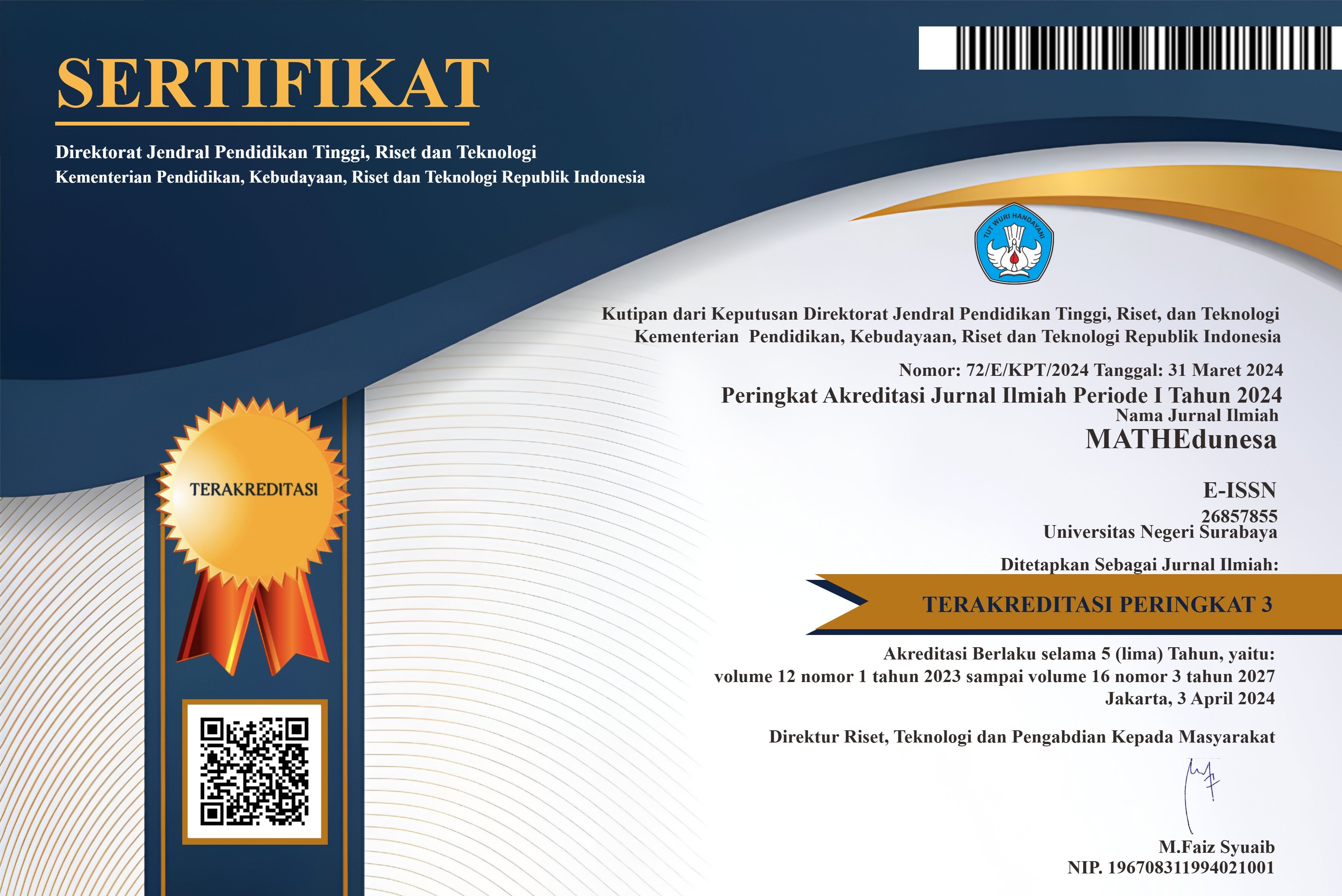Penggunaan Scaffolding untuk Mengurangi Kesalahan Peserta Didik dalam Menyelesaikan Persamaan Kuadrat
DOI:
https://doi.org/10.26740/mathedunesa.v13n3.p883-898Abstract
In mathematics learning activities, students often make mistakes, including in the topic of quadratic equations. This research aims to describe the effect of scaffolding provision based on the type of student’s error in solving problems on quadratic equation material. This research is a descriptive study with a qualitative approach. The data collection technique uses tests and interview methods. This research was conducted in class IX with a total of 25 students who are the prospective subjects. The research subjects who were interviewed and given scaffolding were three students who experienced the most errors and various types of error. The test and interview results were described and analyzed using descriptive analysis. The conclusion of the research is that: 1) Errors in solving quadratic equations include a) process skill errors, which are writing what is known and asked but not accurate and misunderstanding what is known and asked, b) comprehension errors, which are incorrect use of mathematical rules, c) transformation errors, which are the inability to connect important information found and change information in the problem but not accurate, and d) reading errors, which are the inability to read words, units, or symbols correctly. 2) Scaffolding given to reduce errors in solving quadratic equations are a) level 2: explaining, reviewing, and restructuring, and b) level 3: developing conceptual thinking. 3) Scaffolding can reduce errors in solving quadratic equations. For the first error, the three subjects made 12 errors. After receiving the scaffold, three subjects made five (5) errors.
Downloads
Downloads
Published
Issue
Section
 Abstract views: 82
,
Abstract views: 82
, PDF Downloads: 72
PDF Downloads: 72




